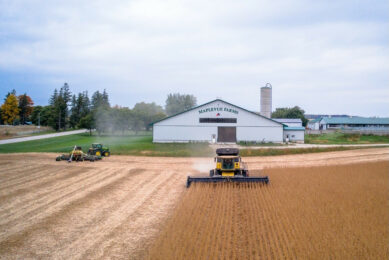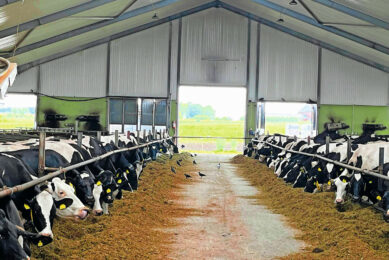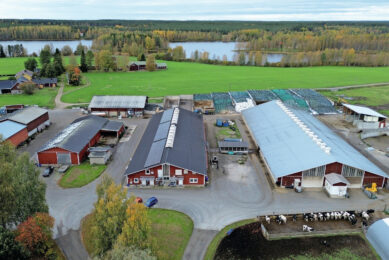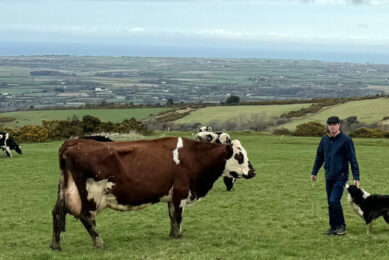Higher costs but slower pace of life milking cows in Menorca
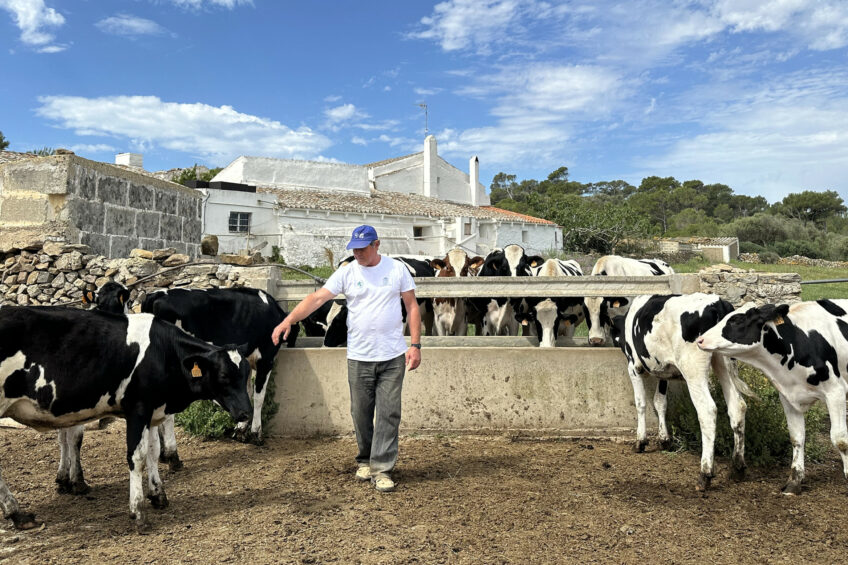
With a population of just 100,000, plus an influx of seasonal tourists, Menorca is blessed with endless sandy beaches, an enviable climate and a thriving dairy sector.
With just over 8,000 dairy cows, Menorca is home to the highest number of dairy farms on any of the Balearic Islands. The milk is used to produce the island’s famous cheeses.
Dairy farming on Menorca attracts a slower pace of life, but its farmers do face some financial challenges when it comes to importing and exporting.
For the past 19 years, Joan Coll Alles has been the ‘l’amo de Binialcala’, or the farmer of Binialcala Farm, situated in the municipality of Es Mercadal. Dating back 150 years, his farm extends to 86 hectares, plus another 60 hectares rented from a neighbouring farmer. There is an additional 40 hectares rented to rear young livestock on.
The farm operates through a ‘d’amitges’, a legal system administered by the Menorcan Rural Society, where both parties sign a contract to operate the farm in close collaboration, a bit like tenant farming.
Dairy farm contract
The contract outlines the duration the farm is to be run, which has to be a minimum of one year. It also details the breakdown for profits and losses, the amount or endowment contributed by the owner of the property, and the contributions that each of the parties must make. The contract is a safeguard to ensure succession, because when farmers like Joan, with no children interested to farm, retire, there will be another young farmer ready to take the farm over.
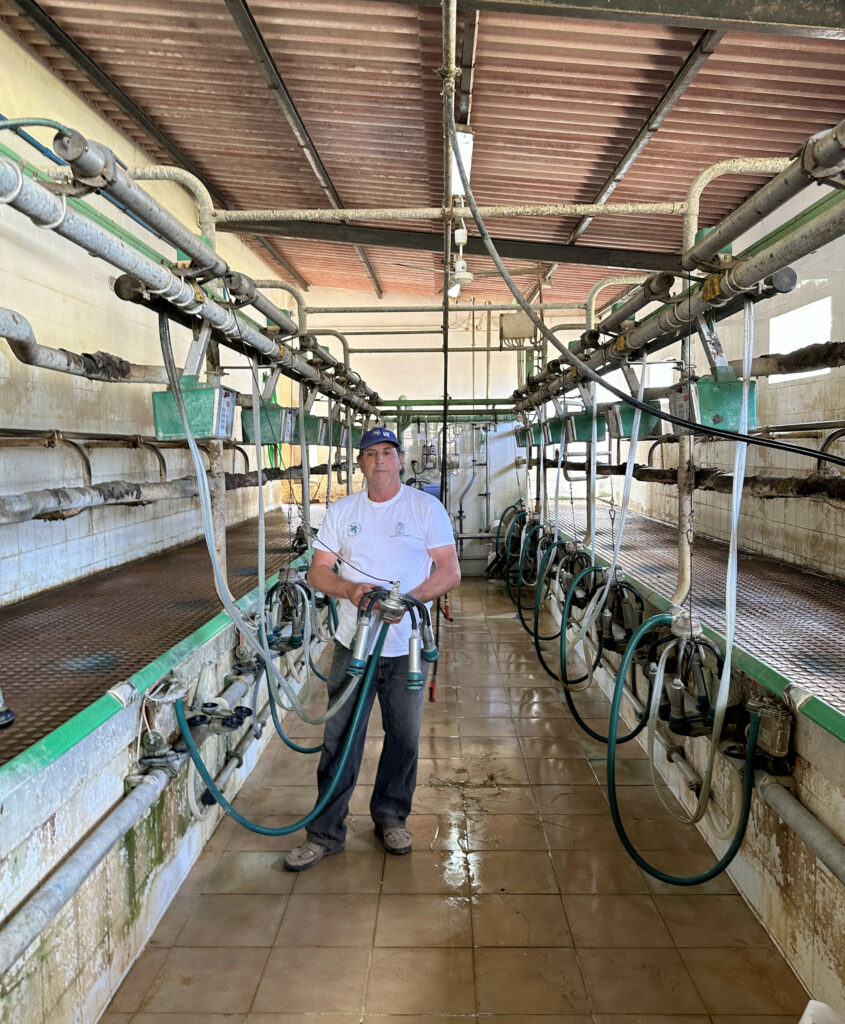
Milking
“At Binialcala Farm we have 60 Friesian cows that are milked twice daily,” says Joan. “Menorca has an average of 50 cows per farm and has always been characterised by extensive livestock farming. However, by law there can be no more than one cow per hectare. We milk the cows at 7.00 in the morning and again at 7 in the evening. On average, they give between 28 and 30 litres of milk daily, or about 10,800 litres per cow per year.”
Cow grazing, feed and high welfare
In Menorca, livestock farming is classed as extensive, with the cows grazing outdoors all year round. In addition, they are fed individually at the parlour with feed that varies weekly depending on the cow’s needs.
“Our cows have a good diet, clean facilities, enough space per animal, good accommodation, and are comfortable during rest. We try to keep them as stress-free as possible, ensuing high animal welfare. Even the emotional state of the cows is positive as they are happy in paradise,” says Joan.
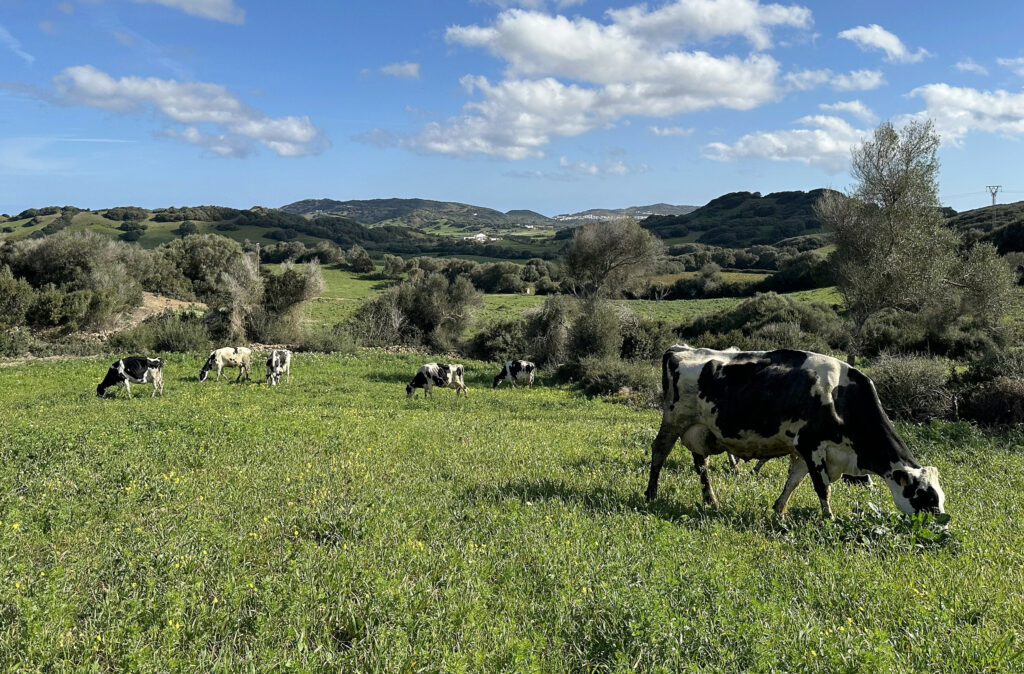
“The cows receive a buffer feed of silage, with rye grass and barley. Our concentrate feed is 50% corn, with vitamins, barley, carob, soybeans, beets, and cotton that we produce ourselves. A nutritionist guides us on the correct rations for the cows. I buy in feed twice a month,” he adds.
Joan supplies his milk to the Coinga Cooperative, which in 2020, was certified with the European Animal Welfare certificate. A veterinarian visits the farm every 3 weeks to check the cows over and to perform pregnancy diagnosis ultrasounds.
Insemination
Joan states: “The longevity of a cow is very important to us, as well as the robustness of its body, its legs, and the udders of the cows. On the farm we keep an AI flask to store the straws for insemination, as we do the AI ourselves. I like to use different bulls, mainly Canadian and American, depending on the morphology of the cow. In Menorca we have been working for many years on the genetic improvement of cows, practicing grazing and giving the best care to our cattle. And that is why some of our cows are among the best in Spain.”
Joan milks the cows in a 6/12 milking parlour with electronic metres and automatic cluster removers. The milking time is between 5 and 8 minutes per cow.
“All the milk is sold to the Coinga Cooperative,” said Joan, “and they currently pay us around 46 euro cents per litre.”
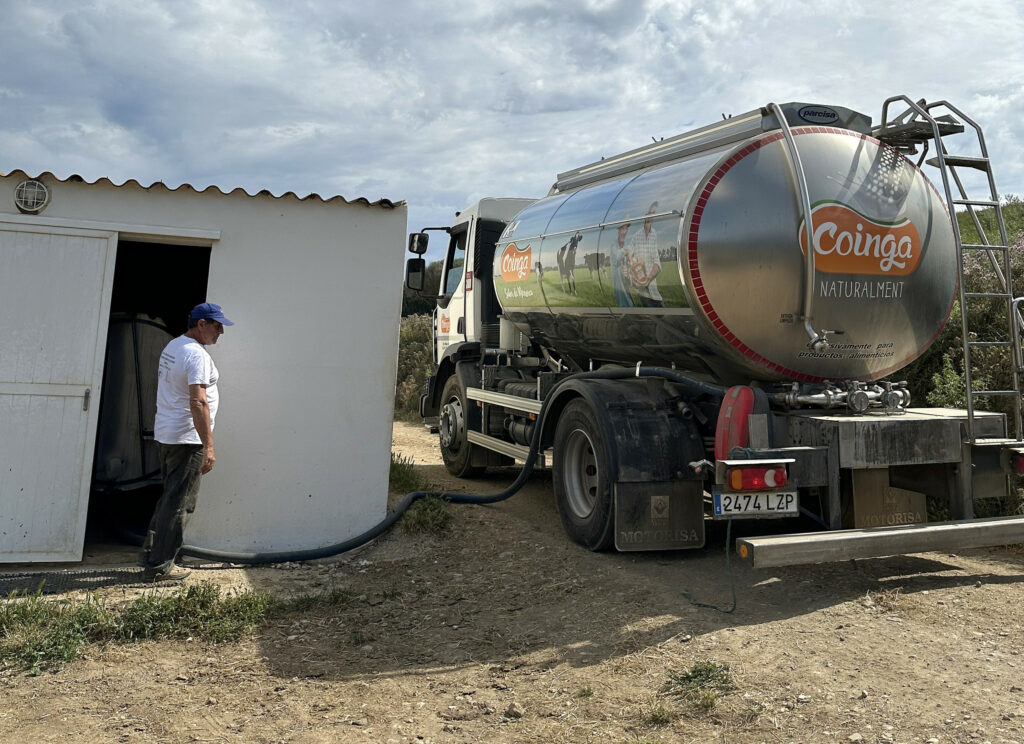
On-farm technology
Joan likes to invest in technology to make the job easier, as he does most of the work on the farm himself, assisted by a part-time apprentice.
“Yes, we are always making improvements,” he states. “We have recently installed a slurry scraping system for the stables. The refrigeration tank has been renovated to incorporate a new washing system. And I also managed to upgrade the tractor and cultivator.”
Joan says the main problems associated with dairying on Menorca is the higher cost of raw materials, including higher import costs. “The price of milk paid could also improve,” he says.
He admits that he has little time left before retiring age, but he is determined to continue working and maintaining the farm for as long as he can.
“We also raise other animals on the farm such as pigs, horses, chickens, sheep and goats. It’s a way of life on this island, but it sure involves a lot of hard work,” he says.



